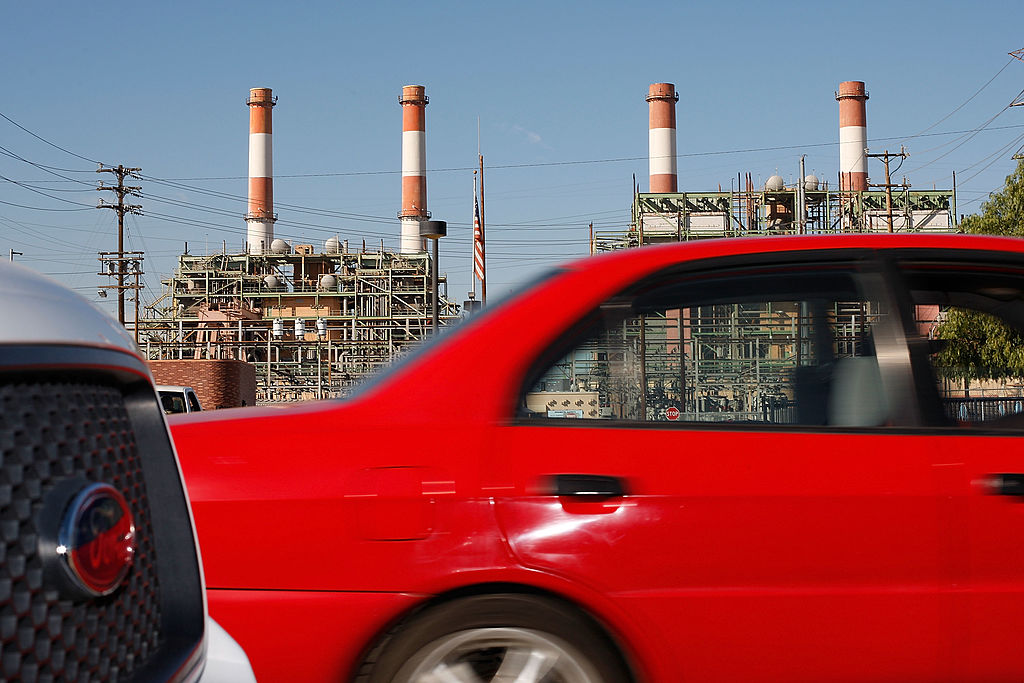Stay
UpdateD
Join the BPC
Email List
Stay up to date on exciting projects and upcoming events from the Black Promoters Collective.

Nearly half of Americans in the U.S. live in areas with failing air quality, according to the American Lung Association’s annual State of the Air report. Experts warn the nation’s air pollution crisis is worsening, putting millions at greater risk for respiratory and cardiovascular issues. Without proper policies in place, the outlook for cleaner air remains bleak.
The organization collected data from 2021-2023 reports, and about 156 million people (about 46% of the U.S. population), and 25 million more than last year’s report, live in areas that received a failing grade for either ozone or particle pollution. At the same time, 42.5 million people live in areas with failing grades for all three measures, the report states.
According to the “State of Air” report, cities nationwide received grades based on their exposure to unhealthy levels of ground-level ozone (also known as smog) and year-round and short-term spikes in fine particulate matter or particle pollution (or soot). The United States Environmental Protection Agency defined particle pollution as a mixture of tiny solids and liquids in the air, with visible particles like dust, dirt, soot and other microscopic particles detectable only with specialized equipment.
Particle pollution also comes from wildfires, wood-burning stoves, coal-fired power plants, diesel engines and other sources, which can be deadly. Widespread air pollutants can lead to serious health risks, including certain cancers, stroke, asthma, dementia, depression, anxiety and even premature death, according to the report and the World Health Organization.
“Families across the U.S. are dealing with the health impacts of air pollution every day, and extreme heat and wildfires are making it worse. Air pollution is causing kids to have asthma attacks, making people who work outdoors sick, and leading to low birth weight in babies. This year’s report shows the dramatic impact that air pollution has on a growing number of people,” Harold Wimmer, president and CEO of the American Lung Association, said in a news release statement.
Short-term spikes in deadly particle pollution affect communities nationwide, with 77.2 million people living in counties impacted — marking the highest level reported in 16 years.
#1: Bakersfield-Delano, CA
#2: Fairbanks-College, AK
#3: Eugene-Springfield, OR
#3: Visalia, CA
#5: Fresno-Hanford-Corcoran, CA
#6: Reno-Carson City-Gardnerville Ranchos, NV-CA
#7: Los Angeles-Long Beach, CA
#8: Yakima, WA
#9: Seattle-Tacoma, WA
#10: Sacramento-Roseville, CA
#11: Medford-Grants Pass, OR
#11: San Jose-San Francisco-Oakland, CA
#11: Spokane-Spokane Valley-Coeur d’Alene, WA-ID
#14: Bismarck, ND
#15: Missoula, MT
#16: Pittsburgh-Weirton-Steubenville, PA-OH-WV
#16: Redding-Red Bluff, CA
#18: Fargo-Wahpeton, ND-MN
#19: Minot, ND
#20: Helena, MT
#21: Indianapolis-Carmel-Muncie, IN
#22: Detroit-Warren-Ann Arbor, MI
#22: Lancaster, PA
#22: Logan, UT-ID
#25: Salt Lake City-Provo-Orem, UT-ID
This year, 85 million people lived in counties that failed to meet national standards for year-round particle pollution — the second highest number ever recorded, just behind last year’s 90.7 million.
#1: Bakersfield-Delano, CA
#2: Visalia, CA
#3: Fresno-Hanford-Corcoran, CA
#4: Eugene-Springfield, OR
#5: Los Angeles-Long Beach, CA
#6: Detroit-Warren-Ann Arbor, MI
#6: San Jose-San Francisco-Oakland, CA
#8: Houston-Pasadena, TX
#9: Cleveland-Akron-Canton, OH
#10: Fairbanks-College, AK
#11: Indianapolis-Carmel-Muncie, IN
#12: Pittsburgh-Weirton-Steubenville, PA-OH-WV
#13: Chicago-Naperville, IL-IN-WI
#14: Cincinnati-Wilmington, OH-KY-IN
#14: Sacramento-Roseville, CA
#16: Brownsville-Harlingen-Raymondville, TX
#17: Medford-Grants Pass, OR
#17: Missoula, MT
#17: St. Louis-St. Charles-Farmington, MO-IL
#20: Kalamazoo-Battle Creek-Portage, MI
#20: Phoenix-Mesa, AZ
#22: Texarkana, TX-AR
#23: El Centro, CA
#23: Yakima, WA
#25: Spokane-Spokane Valley-Coeur d’Alene, WA-ID
Ground-level ozone, a harmful respiratory irritant, worsens due to extreme heat and wildfires. Over 125 million Americans now live in areas with unhealthy ozone levels — an increase of 24.6 million from last year. After years of improvement, many communities are experiencing their worst ozone pollution in years.
#1: Los Angeles-Long Beach, CA
#2: Visalia, CA
#3: Bakersfield-Delano, CA
#4: Phoenix-Mesa, AZ
#5: Fresno-Hanford-Corcoran, CA
#6: Denver-Aurora-Greeley, CO
#7: Houston-Pasadena, TX
#8: San Diego-Chula Vista-Carlsbad, CA
#9: Salt Lake City-Provo-Orem, UT-ID
#10: Dallas-Fort Worth, TX-OK
#11: Sacramento-Roseville, CA
#12: Las Vegas-Henderson, NV
#13: Fort Collins-Loveland, CO
#14: San Jose-San Francisco-Oakland, CA
#15: Chicago-Naperville, IL-IN-WI
#16: New York-Newark, NY-NJ-CT-PA
#17: El Centro, CA
#18: El Paso-Las Cruces, TX-NM
#19: Tulsa-Bartlesville-Muskogee, OK
#20: San Antonio-New Braunfels-Kerrville, TX
#21: St. Louis-St. Charles-Farmington, MO-IL
#22: Albuquerque-Santa Fe-Los Alamos, NM
#23: Colorado Springs, CO
#24: Redding-Red Bluff, CA
#24: Sheboygan, WI
Since Wednesday’s release of the report, medical experts have said that higher levels of air pollution can cause long-term effects in both adults and children due to multiple factors that release these particles in the air.
The organization’s findings state that people of color in the U.S. are more than twice as likely as white individuals to live in areas with failing grades across all pollution measures. Hispanic individuals face even greater disparities, being nearly three times as likely to live in such communities.
Katherine Pruitt, national senior director for policy at the American Lung Association and a co-author of the new report, said a record number of warm days and wildfires led to severe ozone pollution, calling it a period of “horrible ozone years,” according to CNN.
Dr. Panagis Gallatsatos, a pulmonary specialist at Johns Hopkins and spokesperson for the American Lung Association, said doctors can help patients breathe better, but there’s only so much they can do against polluted air.
“As a lung doctor, I don’t have any medication that can really offset that,” he said, per the outlet. “For pollution, we rely on good policies and legislation to protect lung health.”
Stay up to date on exciting projects and upcoming events from the Black Promoters Collective.

©2024 Black Promoters Collective (BPC) All Rights Reserved.